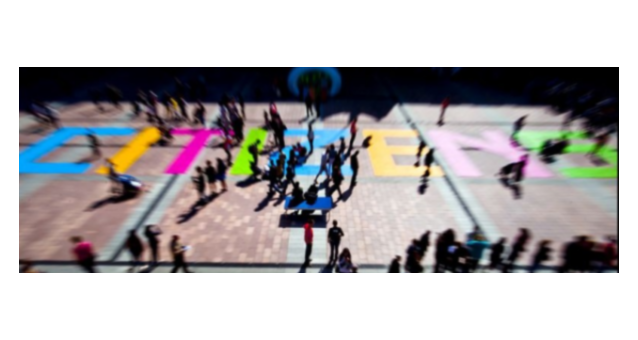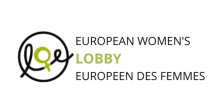Gender equality: EU action triggers steady progress

[Press release of the European Commission, 14 April 2014] In 2013 the European Commission continued taking action to improve equality between women and men, including steps to close the gender gaps in employment, pay and pensions discrepancies, to combat violence and to promote equality in decision-making. Efforts are paying off: concrete progress has been made in the area of addressing the gender pay gap – notably through an initiative by the Commission to improve pay transparency (IP/14/222) – or increasing the number of women on company boards (see Annex). These are the main findings of the Commission’s annual gender equality report published today along with the annual report on fundamental rights (see IP/14/422). But challenges remain: under current rates of progress, it will take almost 30 years to reach the EU’s target of 75% of women in employment, 70 years to make equal pay a reality and 20 years to achieve parity in national parliaments (at least 40% of each gender).
"Europe has been promoting gender equality since 1957 – it is part of the European Union’s ‘DNA’. And the economic crisis has not changed our DNA," said Vice-President Viviane Reding, the EU’s Justice Commissioner. "For us Europeans gender equality is not an option, it is not a luxury, it is an imperative. We can be proud of what Europe has achieved in recent years. Gender equality is not a distant dream but increasingly a European reality. I am convinced that together we can close the remaining gaps in pay, employment and decision-making jobs."
The annual gender equality report reveals that gender gaps have significantly shrunk in recent years but that progress is uneven among the Member States and discrepancies continue to exist in different areas – to the detriment of Europe’s economy.
EU action accelerates progress towards gender equality
Increasing the employment rate of women: women’s employment rate in the EU has increased to 63% from 58% in 2002. EU funding has helped: in the 2007-2013 financing period, an estimated EUR 3.2 billion from the Structural Funds was allocated to invest in childcare facilities and promote women’s participation in the labour market, which had a significant leverage effect (see Annex).
Reducing the pay gap which still stagnates at 16.4% Europe-wide: the European Commission stepped up its efforts by raising awareness about the remaining gender pay gap, marking a European Equal Pay Day (IP/14/190) and monitoring the application of legislation on equal treatment of women and men (IP/13/1227). The Commission also pushed for further progress in March 2014 recommending to Member States to improve pay transparency and thus tackle the pay gap (IP/14/222).
Cracking the glass ceiling: the Commission’s proposal for a Directive to have 40% of the under-represented sex among non-executive board directors by 2020 made good progress in the legislative process and received strong endorsement by the European Parliament in November 2013 (IP/13/1118). As a result, there has been a continuous increase in the number of women on boards ever since the Commission announced the possibility of legislative action in October 2010: from 11% in 2010 to 17.8% in 2014; the rate of progress has been 4 times higher than between 2003 and 2010 (see Annex).
In 2013, the EU took action to protect women and girls from gender-based violence through legislation, practical measures on victims’ rights and a comprehensive policy package against female-genital mutilation (IP/13/1153). It also co-funded 14 national government campaigns against gender-based violence (with EUR 3.7 million), as well as projects led by non-governmental organisations (with EUR 11.4 million).
Childcare: Since 2007, the proportion of children cared for in formal childcare facilities significantly increased (from 26% in 2007 to 30% in 2011 for children under three years old, and from 81% to 86% for children between three and compulsory school age (IP/13/495) The Commission adopted a comprehensive report in 2013 on the attainment of the "Barcelona targets" on provision of childcare.
What challenges remain?
Despite having 60% of university graduates being women, they are still paid 16% less than men per hour of work. In addition, they are more likely to work part-time (32% vs 8.2% of men who work part-time) and to interrupt their careers to care for others. As a result, the gender gap in pensions stands at 39%. Widows and single parents — mainly mothers — are a particularly vulnerable group, and more than a third of single parents have insufficient income.
Although women’s employment rate has increased, it still stands at 63% against 75% for men. This is mainly the result of the economic crisis which has seen men’s employment situation worsening.
Women still bear the brunt of unpaid work within the household and family. Women spend on average 26 hours a week on care and household activities, compared with 9 hours for men.
Women are still less likely to hold senior positions. They account for an average of 17.8% of the members of boards of directors in the largest publicly-listed companies, 2.8% of the Chief Executive Officers, 27% of senior government ministers, and 27% of members of national parliaments.
The results of the first EU wide survey on violence against women, carried out by the European Union Agency for Fundamental Rights (FRA) and based on interviews with 42,000 women show that one in three women (33%) has experienced physical and/or sexual violence since the age of 15.
Background
The report published today provides an overview of the main EU policy and legal developments in gender equality during the last year, as well as examples of policies and actions in Member States. It also analyses recent trends, on the basis of scientific evidence and key indicators that shape the debate on gender equality, and includes a statistical annex with more details on national performances.
The report is structured around the five priorities of the European Commission’s Strategy for equality between women and men 2010-2015: equal economic independence; equal pay for equal work and work of equal value; equality in decision-making; dignity, integrity and ending gender-based violence, gender equality in external action policy, and horizontal issues.
For more information
Press pack: Fundamental rights and gender equality reports:
http://ec.europa.eu/justice/newsroom/fundamental-rights/news/140414_en.htm
Factsheets on Boosting Gender Equality and on Gender Balance on Corporate Boards
Homepage of Vice-President Viviane Reding, EU Justice Commissioner: http://ec.europa.eu/reding
Follow Vice-President Reding on Twitter: @VivianeRedingEU
Follow EU Justice on Twitter: @EU_Justice
European Commission – Gender equality:
http://ec.europa.eu/justice/gender-equality/index_en.htm




